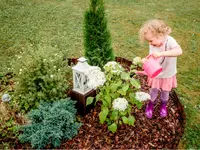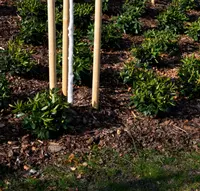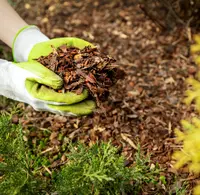
As the warm summer months approach, many individuals with outdoor play areas or poultry runs consider using bark, woodchips, or other suitable surfaces to enhance safety, aesthetics, and functionality. These materials provide a cushioned surface, help control weeds, and reduce dust in the area. However, it's essential to understand how to use and maintain these surfaces properly to ensure their longevity and effectiveness. In this blog post, we will explore some valuable tips for utilising and caring for bark, woodchips, and similar play-grade or poultry run surfaces during summery weather conditions.
Choosing the Right Material
Selecting the appropriate material for your specific needs is crucial. Consider the following factors:
- a. Safety: Ensure that the chosen material is free from toxic substances and non-toxic for children or animals that may come into contact with it.
- b. Durability: Opt for materials that are resistant to degradation, such as hardwood chips or mulch, as they tend to last longer in outdoor settings.
- c. Drainage: The surface should allow adequate drainage to prevent waterlogging, which can lead to the growth of mould or other harmful organisms.
- d. Local Availability: Choose materials that are readily available in your area to ensure easy maintenance and replenishment.
Preparation and Installation
Proper installation sets the foundation for long-term maintenance success. Follow these steps:
- a. Clear the Area: Remove any debris, stones, or existing vegetation from the site to create a clean surface.
- b. Weed Control: Lay a weed barrier fabric or geotextile material over the prepared area to prevent weed growth from underneath the play-grade surface.
- c. Level the Ground: Ensure that the ground is level and even, removing any bumps or depressions that may impact the finished surface.
- d. Depth and Coverage: Determine the appropriate depth for the play-grade material based on safety guidelines and manufacturer recommendations. Spread the material evenly, covering the designated area.
Regular Inspection and Maintenance
To keep your play-grade or poultry run surface in excellent condition during summer, conduct regular inspections and perform necessary maintenance tasks:
- a. Check for Contamination: Regularly inspect the surface for any foreign objects, animal waste, or hazardous materials that could compromise safety or aesthetics. Remove them promptly.
- b. Raking and Levelling: Over time, the play-grade surface may shift or settle due to usage or weather conditions. Use a rake or similar tool to level and redistribute the material as needed.
- c. Weed Control: Despite the weed barrier fabric, some determined weeds may still find a way to grow through. Regularly inspect the area for weeds and remove them manually or use an appropriate herbicide.
- d. Watering and Dust Control: Watering the play-grade surface during dry periods helps to control dust and maintain its integrity. Use a light spray to prevent displacement of the material.
- e. Replenishment: Depending on usage and weather conditions, the play-grade surface may need replenishment over time. Add additional material to maintain the desired depth and coverage.
Using bark, woodchips, or other play-grade or poultry run surfaces during summery weather conditions can enhance safety and aesthetics while reducing dust and weed growth. By selecting the right materials, properly preparing the area, and regularly maintaining the surface, you can ensure its longevity and functionality. Regular inspections, weed control, levelling, and occasional replenishment are essential steps to keep the surface in excellent condition. By following these tips, you'll create a pleasant and safe outdoor environment for play or poultry runs throughout the summer season and beyond.




